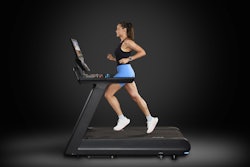Source: National Athletic Trainers’ Association
DALLAS, January 24, 2017 – The National Athletic Trainers’ Association (NATA) has released a new position statement, “Management of Acute Skin Trauma.” Created by the NATA Research & Education Foundation, the statement appears in theJournal of Athletic Training, NATA’s scientific publication: https://natajournals.org/doi/pdf/10.4085/1062-6050-51.7.01
Skin injuries such as lacerations, incisions, blisters, abrasions, avulsions and punctures are common during participation in athletic and recreational activities. Appropriate treatment and monitoring of these injuries are critical to create an environment that promotes healing and lessens the risk of complications. The new position statement offers recommendations to educate clinicians about cleansing, debridement and dressing techniques; recognition, management and prevention of infection and adverse reactions; and monitoring and educating the patient.
“The development and implementation of these recommendations for acute skin trauma are critical for athletic trainers and other health care professionals to successfully deliver health care services to patients,” said lead author Joel W. Beam, EdD, LAT, ATC, professor and chair, department of Clinical and Applied Movement Sciences at Brooks College of Health, University of North Florida, Jacksonville. “The goal in treating acute skin trauma is to achieve rapid healing while providing optimal function and cosmetic results and minimizing adverse events.”
Highlights of the recommendations include:
Cleansing
- The wound and surrounding tissues should be thoroughly cleansed as soon as possible.
- After the initial cleansing, the wound should be cleansed only when clinically necessary (e.g., visibly contaminated, clinically infected).
- Irrigation with normal saline or tap water to cleanse acute skin trauma is effective in removing debris and bacteria while preserving the healing tissues.
- Antiseptics should be used with caution as cleansing agents because some may be toxic to tissues.
- Scrubbing or swabbing of the wound should be avoided because it may be ineffective in reducing bacterial counts and can damage the healing tissues.
Debridement (removal of damaged/dead tissue or foreign debris)
- The area of acute skin trauma should be cleansed and debrided before dressings are applied.
- The method of debridement should be based on the type of wound, amount and type of debris, training and expertise of the health care provider and cost-effectiveness and time-effectiveness of the technique.
Dressing
- The area of acute skin trauma should be covered with nonocclusive dressings (e.g., sterile gauze, nonadherent pads, adhesive strips and patches) or occlusive dressings (e.g., films, foams, hydrocolloids) to support the healing process, rather than be left uncovered, until fully healed.
- Occlusive dressings are designed to interact with the wound to create an optimal environment for healing (i.e., a moist, clean, warm environment) and lessen the risk of infection and adverse reactions.
Identification of Infection and Adverse Reactions
- The patient should be monitored for signs of infection such as fever, pain, edema, warmth or delayed wound healing, and for the development of an adverse reaction stemming from the use of some cleansing solutions, topical antimicrobial agents and dressings. Such reactions may include a rash, white discoloration, tenderness or a burning sensation.
- Topical antimicrobial agents can reduce infection rates in acute skin trauma, but the period of use should be limited to prevent emergence of resistant bacterial strains.
- Oral antibiotics should not be used prophylactically unless the wound is heavily contaminated.
- The status or health of the patient (e.g., malnutrition, smoking, diabetes) may contribute to the development of adverse reactions and should be considered.
- A referral to a physician is recommended for patients with deep wounds requiring sutures or staples, heavily contaminated wounds, wounds with tendon or nerve injury or wounds that develop warmth, drainage, pain, or rash or show a delay in healing.
Follow-up
- Throughout the healing process, the patient, wound area and dressing should be visually inspected daily for the presence of adverse reactions and infection and to guide the frequency of dressing changes.
- To increase compliance, patients should be educated about when dressings are to be changed and what to expect in the dressing as the wound heals.
Supplies
- Supplies to manage acute skin trauma should be available in the athletic training facility and athletic training kits.
“Most acute skin trauma heals without consequence, although it is important to manage these wounds through appropriate cleansing, debridement and dressing techniques to lessen the number of poor outcomes and allow functional return to activity as quickly as possible,” said Beam.
For more information, please visit: www.nata.org.
About NATA: National Athletic Trainers’ Association (NATA) – Health Care for Life & Sport
Athletic trainers are health care professionals who specialize in the prevention, diagnosis, treatment and rehabilitation of injuries and sport-related illnesses. They prevent and treat chronic musculoskeletal injuries from sports, physical and occupational activity, and provide immediate care for acute injuries. Athletic trainers offer a continuum of care that is unparalleled in health care. The National Athletic Trainers' Association represents and supports 44,000 members of the athletic training profession. Visit www.nata.org.































